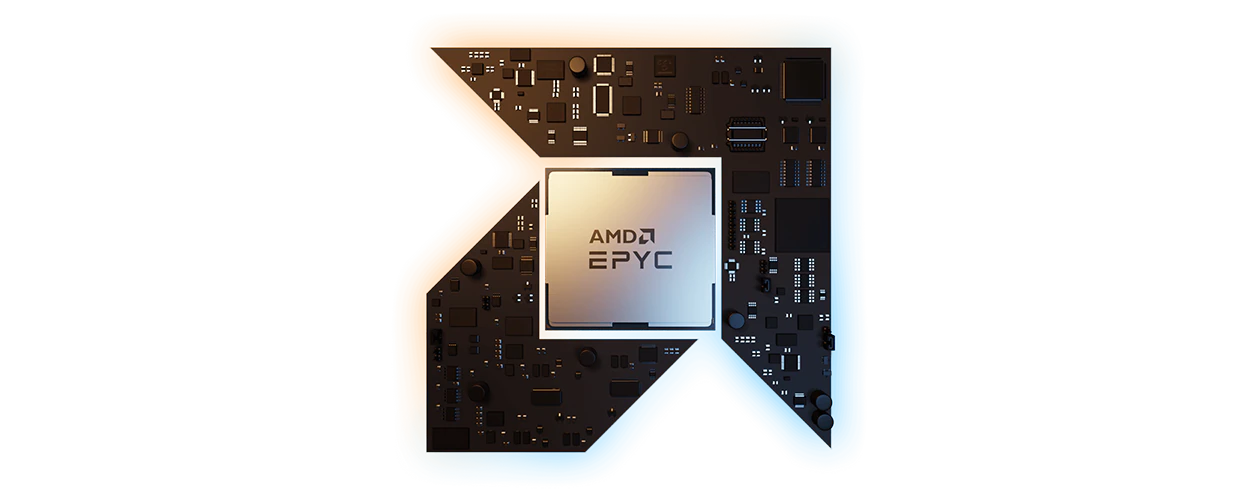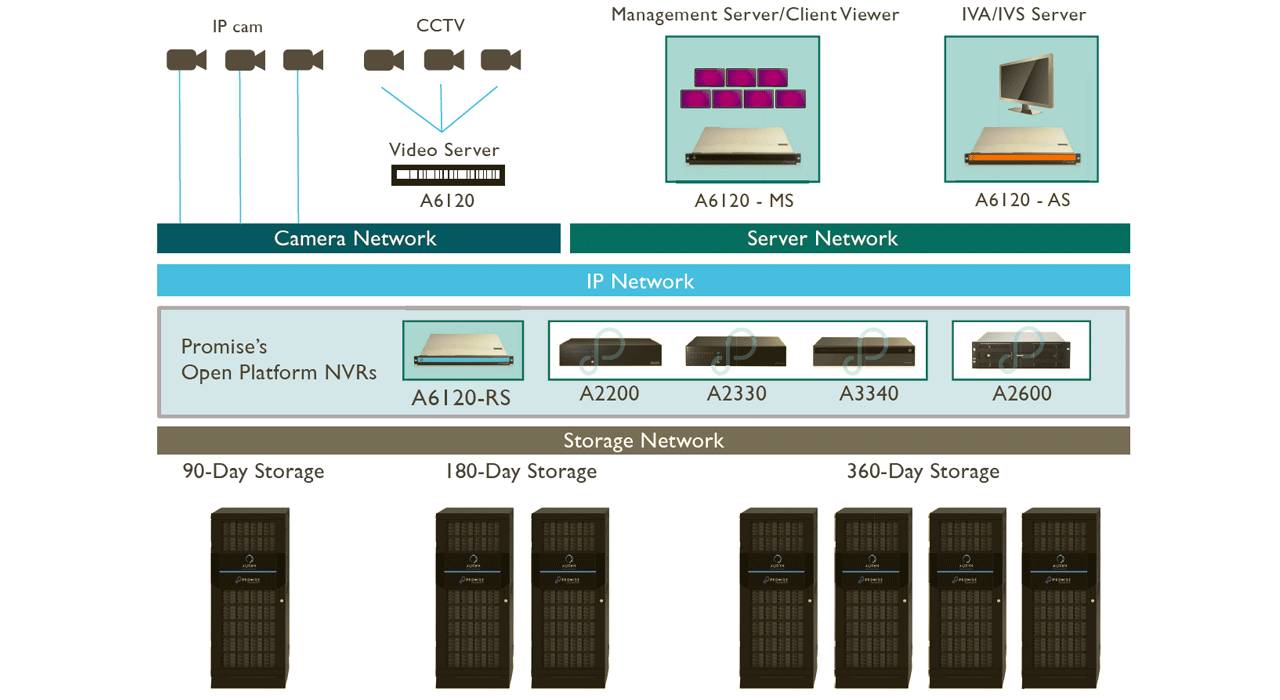Poprawa wydajności i efektywności Centrów Danych


wzrost wydajności1
*TOS, 9654 vs 7763 on SPECjbb®2015-MultiJVM Max

Wzrost wydajności konkurencyjnej2
*Enterprise, 9654 vs 8380 na SPECjbb®2015-MultiJVM Max

wzrost wydajności1
*TOS, 9654 vs 7763 on SPECjbb®2015-MultiJVM Max

Przyspieszenie wyników biznesowych
Zobacz, jak procesory AMD EPYC™ czwartej generacji radzą sobie z niektórymi najpopularniejszymi zadaniami.
Enterprise2
2P Enterprise Server-Side Java SPEC JBB®
2015 Multi-JVM Max

Cloud Computing4
2P Integer Throughput SPECrate®
2017_int_base

High Performance Computing5
2P Floating Point Throughput SPECrate®
2017_fp_base


Poznaj „Zen 4”
Procesory AMD EPYC™ z serii 9004 zawierają do 96 rdzeni opartych na mikroarchitekturze „Zen 4”, zbudowanych w procesie technologicznym 5 nm. „Zen 4” zapewnia wiodącą przepustowość i pojemność pamięci dzięki 12 kanałom DDR5, a także wejścia/wyjścia nowej generacji dzięki PCIe® 5.0 i rozszerzeniu pamięci dzięki CXL™.6,7

Lepsze CAPEX i OPEX
Procesory AMD EPYC™ czwartej generacji mogą zapewnić wymaganą wydajność obliczeniową przy mniejszej liczbie serwerów w porównaniu z rozwiązaniami konkurencyjnymi — co prowadzi do mniejszego zajmowania centrum danych i obniżenia całkowitego kosztu posiadania.
O 11% niższy całkowity koszt posiadania w ciągu 3 lat (szacunkowo)
4 Intel® Xeon® Gold 6130-based servers vs. 1 AMD EPYC™ 9534-based server8
O 11% niższy całkowity koszt posiadania w ciągu 3 lat (szacunkowo)
8 Intel® Xeon® Gold 6130-based servers vs. 2 AMD EPYC™ 9534-based servers9
O 14% niższy całkowity koszt posiadania w ciągu 3 lat (szacunkowo)
16 Intel® Xeon® Gold 6130-based servers vs. 3 AMD EPYC™ 9654-based servers10
O 17% niższy całkowity koszt posiadania w ciągu 3 lat (szacunkowo)
47 Intel® Xeon® Gold 6130-based servers vs. 8 AMD EPYC™ 9654-based servers11
O 17% niższy całkowity koszt posiadania w ciągu 3 lat (szacunkowo)
94 Intel® Xeon® Gold 6130-based servers vs. 16 AMD EPYC™ 9654-based servers12
O 17% niższy całkowity koszt posiadania w ciągu 3 lat (szacunkowo)
188 Intel® Xeon® Gold 6130-based servers vs. 32 AMD EPYC™ 9654-based server13

Lider efektywności energetycznej
Procesory AMD EPYC™ napędzają najbardziej energooszczędne serwery x86, pomagając obniżyć koszty energii i osiągnąć korporacyjne cele zrównoważonego rozwoju.14

Chroniony przez
AMD Infinity Guard
Każdy procesor AMD EPYC™ zawiera AMD Infinity Guard, pełny zestaw funkcji zabezpieczających, które mogą pomóc chronić dane od warstwy krzemowej po warstwę aplikacji.15 Odpocznij łatwiej dzięki technologiom AMD, które umożliwiają poufne przetwarzanie dzięki szyfrowaniu danych w użyciu.
Specyfikacje
| Model | # of CPU Cores | # of Threads | Max. Boost Clock | All Core Boost Speed | Base Clock | L3 Cache | Default TDP |
| AMD EPYC™ 9654P | 96 | 192 | Up to 3.7GHz | 3.55GHz | 2.4GHz | 384MB | 360W |
| AMD EPYC™ 9654 | 96 | 192 | Up to 3.7GHz | 3.55GHz | 2.4GHz | 384MB | 360W |
| AMD EPYC™ 9634 | 84 | 168 | Up to 3.7GHz | 3.1GHz | 2.25GHz | 384MB | 290W |
| AMD EPYC™ 9554P | 64 | 128 | Up to 3.75GHz | 3.75GHz | 3.1GHz | 256MB | 360W |
| AMD EPYC™ 9554 | 64 | 128 | Up to 3.75GHz | 3.75GHz | 3.1GHz | 256MB | 360W |
| AMD EPYC™ 9534 | 64 | 128 | Up to 3.7GHz | 3.55GHz | 2.45GHz | 256MB | 280W |
| AMD EPYC™ 9474F | 48 | 96 | Up to 4.1GHz | 3.95GHz | 3.6GHz | 256MB | 360W |
| AMD EPYC™ 9454P | 48 | 96 | Up to 3.8GHz | 3.65GHz | 2.75GHz | 256MB | 290W |
| AMD EPYC™ 9454 | 48 | 96 | Up to 3.8GHz | 3.65GHz | 2.75GHz | 256MB | 290W |
| AMD EPYC™ 9374F | 32 | 64 | Up to 4.3GHz | 4.1GHz | 3.85GHz | 256MB | 320W |
| AMD EPYC™ 9354P | 32 | 64 | Up to 3.8GHz | 3.75GHz | 3.25GHz | 256MB | 280W |
| AMD EPYC™ 9354 | 32 | 64 | Up to 3.8GHz | 3.75GHz | 3.25GHz | 256MB | 280W |
| AMD EPYC™ 9334 | 32 | 64 | Up to 3.9GHz | 3.85GHz | 2.7GHz | 128MB | 210W |
| AMD EPYC™ 9274F | 24 | 48 | Up to 4.3GHz | 4.1GHz | 4.05GHz | 256MB | 320W |
| AMD EPYC™ 9254 | 24 | 48 | Up to 4.15GHz | 3.9GHz | 2.9GHz | 128MB | 200W |
| AMD EPYC™ 9224 | 24 | 48 | Up to 3.7GHz | 3.65GHz | 2.5GHz | 64MB | 200W |
| AMD EPYC™ 9174F | 16 | 32 | Up to 4.4GHz | 4.15GHz | 4.1GHz | 256MB | 320W |
| AMD EPYC™ 9124 | 16 | 32 | Up to 3.7GHz | 3.6GHz | 3.0GHz | 64MB | 200W |
- SP5-005C: SPECjbb® 2015-MultiJVM Max comparison based on published results as of 11/10/2022. Configurations: 2P AMD EPYC 9654 (815459 SPECjbb®2015 MultiJVM max-jOPS, 356204 SPECjbb®2015 MultiJVM critical-jOPS, 192 total cores, http://www.spec.org/jbb2015/results/res2022q4/jbb2015-20221019-00861.html) vs. 2P AMD EPYC 7763 (420774 SPECjbb®2015 MultiJVM max-jOPS, 165211 SPECjbb®2015 MultiJVM critical-jOPS, 128 total cores, http://www.spec.org/jbb2015/results/res2021q3/jbb2015-20210701-00692.html). SPEC® and SPECrate® are registered trademarks of the Standard Performance Evaluation Corporation. See www.spec.org for more information.
- SP5-012B: SPECjbb® 2015-MultiJVM Max based on published scores from www.spec.org as of 11/10/2022. Configurations: 2P AMD EPYC 9654 (815459 SPECjbb®2015 MultiJVM max-jOPS, 356204 SPECjbb®2015 MultiJVM critical-jOPS, 192 Total Cores, http://www.spec.org/jbb2015/results/res2022q4/jbb2015-20221019-00861.html) is 2.85x the performance of published 2P Intel Xeon Platinum 8380 (286125 SPECjbb®2015 MultiJVM max-jOPS, 152057 SPECjbb®2015 MultiJVM critical-jOPS, 80 Total Cores, http://www.spec.org/jbb2015/results/res2021q4/jbb2015-20211006-00706.html).
- SP5-011B: SPECpower_ssj®2008 comparison based on published 2U, 2P Windows® results as of 11/10/2022. Configurations: 2P AMD EPYC 9654 (27501 overall ssj_ops/W, 2U, http://www.spec.org/power_ssj2008/results/res2022q4/power_ssj2008-20221020-01194.html) vs. 2P Intel Xeon Platinum 8380 (13670 overall ssj_ops/W, 2U, http://www.spec.org/power_ssj2008/results/res2022q4/power_ssj2008-20220926-01184.html). 2P AMD EPYC 7763 (23505 overall ssj_ops/W, 2U, http://www.spec.org/power_ssj2008/results/res2021q2/power_ssj2008-20210324-01091.html) shown at 1.72x for reference. SPEC® and SPECpower_ssj® are registered trademarks of the Standard Performance Evaluation Corporation. See www.spec.org for more information.
- SP5-010B: SPECrate®2017_int_base based on published scores from www.spec.org as of 11/10/2022. Configurations: 2P AMD EPYC 9654 (1790 SPECrate®2017_int_base, 192 total cores, www.spec.org/cpu2017/results/res2022q4/cpu2017-20221024-32607.html) is 2.97x the performance of published 2P Intel Xeon Platinum 8380 (602 SPECrate®2017_int_base, 80 total cores, http://spec.org/cpu2017/results/res2021q2/cpu2017-20210521-26364.html). Published 2P AMD EPYC 7763 (861 SPECrate®2017_int_base, 128 total cores, http://spec.org/cpu2017/results/res2021q4/cpu2017-20211121-30148.html) is shown at 1.43x for reference. SPEC®, SPEC CPU®, and SPECrate® are registered trademarks of the Standard Performance Evaluation Corporation. See www.spec.org for more information.
- SP5-009C: SPECrate®2017_fp_base based on published scores from www.spec.org as of 11/10/2022. Configurations: 2P AMD EPYC 9654 (1480 SPECrate®2017_fp_base, 192 total cores, www.spec.org/cpu2017/results/res2022q4/cpu2017-20221024-32605.html) is 2.52x the performance of published 2P Intel Xeon Platinum 8380 (587 SPECrate®2017_fp_base, 160 total cores, www.spec.org/cpu2017/results/res2022q4/cpu2017-20221010-32542.html).Published 2P AMD EPYC 7763 (663 SPECrate®2017_fp_base, 128 Total Cores, http://spec.org/cpu2017/results/res2021q4/cpu2017-20211121-30146.html) is shown at 1.13x for reference. SPEC®, SPEC CPU®, and SPECrate® are registered trademarks of the Standard Performance Evaluation Corporation. See www.spec.org for more information.
- EPYC-032: AMD EPYC 9004 CPUs support 12 channels of up to 4800 MHz DDR5 memory which is 460.8 GB/s of maximum memory throughput per socket. Intel Scalable “Ice Lake” CPUs support 8 channels of up to 3200 MHz DDR 4 (per https://ark.intel.com/) have a maximum 204.8 GB/s. EPYC 9004 CPUs have 2.25x the memory throughput per CPU. 460.8 ÷ 204.8 = 2.25x the max throughput or 125% more max throughput.
- EPYC-034A: AMD EPYC 9004 CPUs can support 12 memory channels with 2 DPC (DIMMs / channel) 12 x 2 = 24 DIMM slots x 256GB DIMMs = 6,144GB of standard DRAM (DDR) memory or 6TB per CPU. The highest supported total memory (not just DRAM) on https://ark.intel.com/ is the Intel Xeon Ice Lake is 6 TB per CPU – but with standard DRAM the limit is 4TB: 8 memory channels x 2 DPC = 16 total DIMM slots x 256GB DIMMs = 4,096GB of DRAM (DDR) memory, or 4TB per CPU. EPYC 9004 Series supports 50% more DRAM than Intel Ice Lake CPUs.
- SP5TCO-013: As of 11/10/2022 based on AMD Internal analysis using the AMD EPYC™ SERVER VIRTUALIZATION and GREENHOUSE GAS EMISSIONS TCO ESTIMATION TOOL – version 10.75 estimating the cost and quantity of 2P AMD EPYC™ 9534 (64 core/CPU) powered server versus 2P Intel® Xeon® Gold 6130 (16 core/CPU) based server solutions required to deliver 125 total virtual machines (VM), requiring 8 core and 16GB of memory per VM, for a 3 year period. Environmental impact estimates made leveraging this data, using the Country / Region specific electricity factors from the '2020 Grid Electricity Emissions Factors v1.4 – September 2020′, and the United States Environmental Protection Agency 'Greenhouse Gas Equivalencies Calculator’. This scenario contains many assumptions and estimates and, while based on AMD internal research and best approximations, should be considered an example for information purposes only, and not used as a basis for decision making over actual testing. For additional details, see https://www.amd.com/en/claims/epyc4#SP5TCO-013. „
- SP5TCO-014: As of 11/10/2022 based on AMD Internal analysis using the AMD EPYC™ SERVER VIRTUALIZATION and GREENHOUSE GAS EMISSIONS TCO ESTIMATION TOOL – version 10.75 estimating the cost and quantity of 2P AMD EPYC™ 9534 (64 core/CPU) powered server versus 2P Intel® Xeon® Gold 6130 (16 core/CPU) based server solutions required to deliver 250 total virtual machines (VM), requiring 8 core and 16GB of memory per VM for a 3 year period. Environmental impact estimates made leveraging this data, using the Country / Region specific electricity factors from the '2020 Grid Electricity Emissions Factors v1.4 – September 2020′, and the United States Environmental Protection Agency 'Greenhouse Gas Equivalencies Calculator’. This scenario contains many assumptions and estimates and, while based on AMD internal research and best approximations, should be considered an example for information purposes only, and not used as a basis for decision making over actual testing. For additional details, see https://www.amd.com/en/claims/epyc4#SP5TCO-014. „
- SP5TCO-015: As of 11/10/2022 based on AMD Internal analysis using the AMD EPYC™ SERVER VIRTUALIZATION and GREENHOUSE GAS EMISSIONS TCO ESTIMATION TOOL – version 10.75 estimating the cost and quantity of 2P AMD EPYC™ 9654 (96 core/CPU) powered server versus 2P Intel® Xeon® Gold 6130 (16 core/CPU) based server solutions required to deliver 500 total virtual machines (VM), requiring 8 core and 16GB of memory per VM for a 3 year period. Environmental impact estimates made leveraging this data, using the Country / Region specific electricity factors from the '2020 Grid Electricity Emissions Factors v1.4 – September 2020′, and the United States Environmental Protection Agency 'Greenhouse Gas Equivalencies Calculator’. This scenario contains many assumptions and estimates and, while based on AMD internal research and best approximations, should be considered an example for information purposes only, and not used as a basis for decision making over actual testing. For additional details, see https://www.amd.com/en/claims/epyc4#SP5TCO-015. „
- SP5TCO-016: As of 11/10/2022 based on AMD Internal analysis using the AMD EPYC™ SERVER VIRTUALIZATION and GREENHOUSE GAS EMISSIONS TCO ESTIMATION TOOL – version 10.75 estimating the cost and quantity of 2P AMD EPYC™ 9654 (96 core/CPU) powered server versus 2P Intel® Xeon® Gold 6130 (16 core/CPU) based server solutions required to deliver 1500 total virtual machines (VM), requiring 8 core and 16GB of memory per VM for a 3 year period. Environmental impact estimates made leveraging this data, using the Country / Region specific electricity factors from the '2020 Grid Electricity Emissions Factors v1.4 – September 2020′, and the United States Environmental Protection Agency 'Greenhouse Gas Equivalencies Calculator’. This scenario contains many assumptions and estimates and, while based on AMD internal research and best approximations, should be considered an example for information purposes only, and not used as a basis for decision making over actual testing. For additional details, see https://www.amd.com/en/claims/epyc4#SP5TCO-016. „
- SP5TCO-017: As of 11/10/2022 based on AMD Internal analysis using the AMD EPYC™ SERVER VIRTUALIZATION and GREENHOUSE GAS EMISSIONS TCO ESTIMATION TOOL – version 10.75 estimating the cost and quantity of 2P AMD EPYC™ 9654 (96 core/CPU) powered server versus 2P Intel® Xeon® Gold 6130 (16 core/CPU) based server solutions required to deliver 3000 total virtual machines (VM), requiring 8 core and 16GB of memory per VM for a 3 year period. Environmental impact estimates made leveraging this data, using the Country / Region specific electricity factors from the '2020 Grid Electricity Emissions Factors v1.4 – September 2020′, and the United States Environmental Protection Agency 'Greenhouse Gas Equivalencies Calculator’. This scenario contains many assumptions and estimates and, while based on AMD internal research and best approximations, should be considered an example for information purposes only, and not used as a basis for decision making over actual testing. For additional details, see https://www.amd.com/en/claims/epyc4#SP5TCO-017. „
- SP5TCO-018: As of 11/10/2022 based on AMD Internal analysis using the AMD EPYC™ SERVER VIRTUALIZATION and GREENHOUSE GAS EMISSIONS TCO ESTIMATION TOOL – version 10.75 estimating the cost and quantity of 2P AMD EPYC™ 9654 (96 core/CPU) powered server versus 2P Intel® Xeon® Gold 6130 (16 core/CPU) based server solutions required to deliver 6000 total virtual machines (VM), requiring 8 core and 16GB of memory per VM for a 3 year period. Environmental impact estimates made leveraging this data, using the Country / Region specific electricity factors from the '2020 Grid Electricity Emissions Factors v1.4 – September 2020′, and the United States Environmental Protection Agency 'Greenhouse Gas Equivalencies Calculator’. This scenario contains many assumptions and estimates and, while based on AMD internal research and best approximations, should be considered an example for information purposes only, and not used as a basis for decision making over actual testing. For additional details, see https://www.amd.com/en/claims/epyc4#SP5TCO-018. „
- EPYC-028B: SPECpower_ssj® 2008, SPECrate®2017_int_energy_base, and SPECrate®2017_fp_energy_base based on results published on SPEC’s website as of 11/10/22. VMmark® server power-performance (PPKW) based results published at https://www.vmware.com/products/vmmark/results3x.1.html?sort=score. The first 74 ranked SPECpower_ssj®2008 publications with the highest overall efficiency overall ssj_ops/W results were all powered by AMD EPYC processors. For SPECrate®2017 Integer (Energy Base), AMD EPYC CPUs power the first 4 of 5 SPECrate®2017_int_energy_base performance/system W scores. For SPECrate®2017 Floating Point (Energy Base), AMD EPYC CPUs power the first 8 of 9 SPECrate®2017_fp_energy_base performance/system W scores. For VMmark® server power-performance (PPKW), have the top two results for 2- and 4-socket matched pair results outperforming all other socket results. See https://www.amd.com/en/claims/epyc3x#faq-EPYC-028B for the full list. More information about SPEC® is available at http://www.spec.org. SPEC, SPECrate, and SPECpower are registered trademarks of the Standard Performance Evaluation Corporation. VMmark is a registered trademark of VMware in the US or other countries.
- GD-183: AMD Infinity Guard features vary by EPYC™ Processor generations. Infinity Guard security features must be enabled by server OEMs and/or Cloud Service Providers to operate. Check with your OEM or provider to confirm support of these features. Learn more about Infinity Guard at https://www.amd.com/en/technologies/infinity-guard.



 TŁO
TŁO